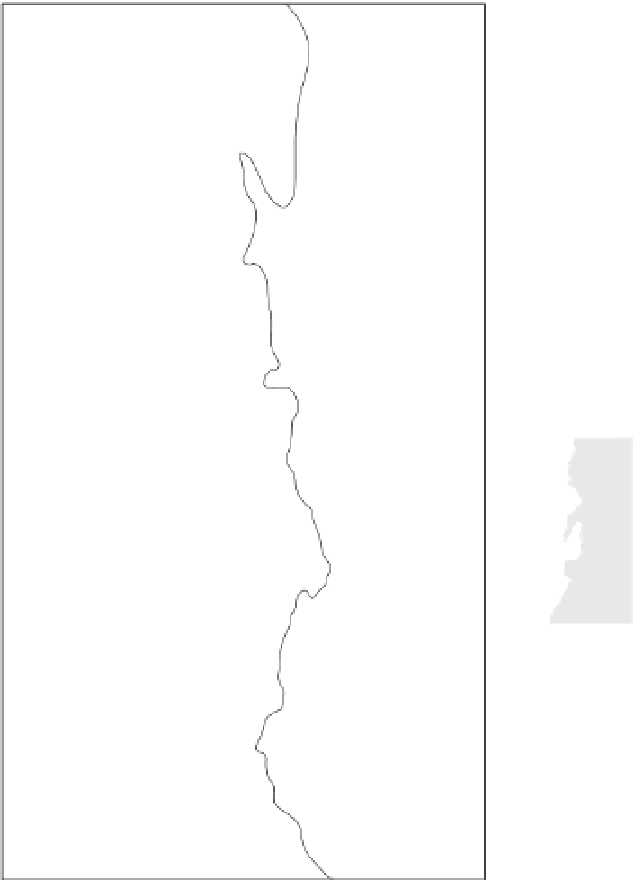Geology Reference
In-Depth Information
A
B
113°
112°
111°
Malad City
segment
C
Idaho
Clarkston Mtn.
segment
42°
Utah
BC
T junction
Collinston
segment
Logan
Brigham
City
C
Brigham City
segment
W
Great
Weber
segment
Salt
41°
SLC
Lake
Salient
Salt Lake City
se
gment
Salt Lake
City
D
Segmented
Fault Zone
N
Orem
& Provo
Provo
segment
Fig. 4.16
Segmentation of the
Wasatch Fault zone.
A. At least eight segments and four
different types of segment
boundaries have been identified
along the 400 km long system of
normal faults that delineate the
Wasatch front. Arrows identify
segment boundaries. B-E: Types
of segment boundaries:
B. T-junction; C. salient; D. gap;
E.
en echelon
. Segment names - BC:
Brigham City; C: Colliston; F:
Fayette; L: Levan; N: Nephi; SLC:
Salt Lake City; W: Weber. Modified
from Machette
et al.
(1992a,b).
Utah
Lake
L
Gap
40°
Nephi
segment
E
Nephi
L
Levan
se
gment
Levan
0
50
100
F
km
segment
boundary
En echelon
step
39°
non-overlapping tips of larger thrust faults is
filled via three mechanisms: an array of small
forethrusts with displacements of less than 2 m
define a “damage zone” between the fault tips;
a single, parallel backthrust reaches its
maximum displacement in the gap between the
two larger faults; and the largest anticline also
culminates in this gap. The overall pattern of
faulting suggests that, during future shortening,
the larger faults are likely to link together
across the damage zone and simplify the fault
trace. It is important to recognize that, until
such linkage occurs, the entire array of faults
and folds must be quantified in order to assess
the displacement gradient along the fault zone.
Segmentation of range-front faults
Some large mountain ranges, such as the Sierra
Nevada of California or the Wasatch Range of
Utah, are bounded by a range-front fault system
that is hundreds of kilometers long. The range-
bounding fault never ruptures along its entire
length in a single seismic event. Instead, smaller
segments break in individual earthquakes, and
multiple seismic events are required to displace
the entire range front. Along some of these
elongate range fronts, a recognizable
segmentation
of the bounding fault zone into smaller rupture
lengths that have definable terminations can be
discerned (Fig. 4.16). Along the Wasatch Fault



























































































































































































